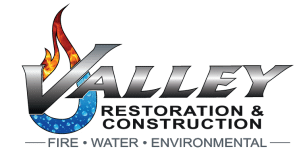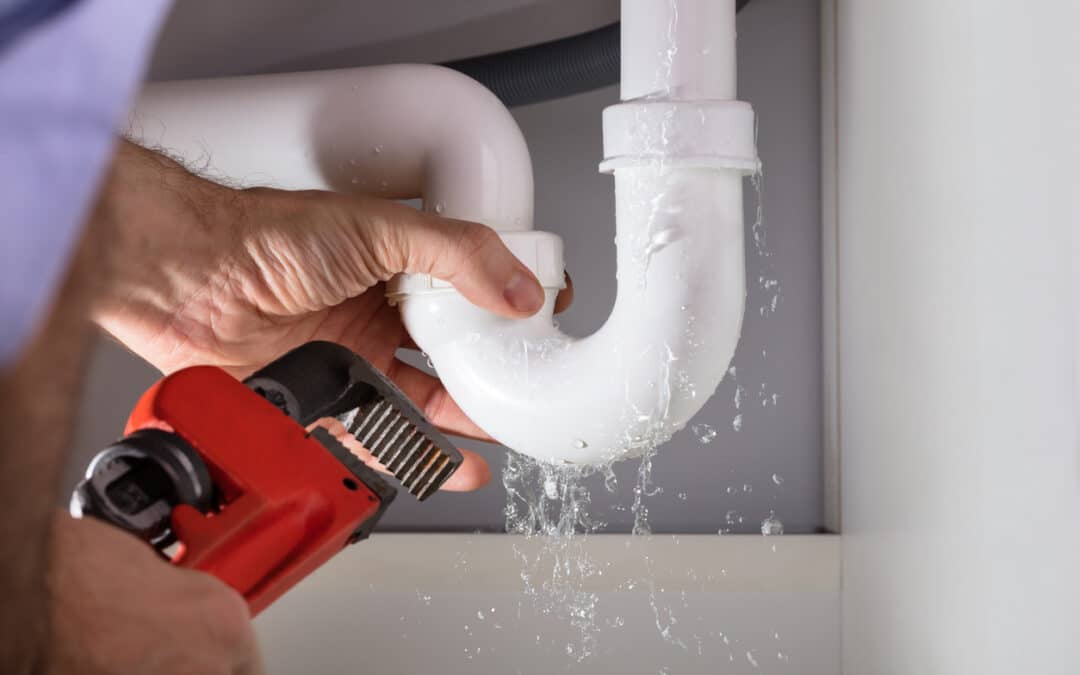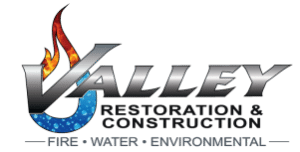Water damage is a devastating issue that can cause havoc for home and business owners. However, most repair work requires an understanding of water damage classes and categories. Therefore, it is imperative to understand the different classes of water damage, water damage categories, types of water damage, and water damage causes before effective mitigation and restoration work can occur.
As the top water damage restoration experts in the greater Montrose area, Valley Restoration and Construction is happy to break down the specifics of water damage classification for you.
Classes of Water Damage
There are four classes of water damage, with each having varied consequences. This classification system helps professionals to determine the severity and extent of damage caused by water on buildings. The classes also help the professionals determine the appropriate water damage restoration methods and equipment.
Class 1 Water Damage
Class 1 water damage has less far-reaching consequences than the four water damage classes. It is characterized by minimal evaporation and absorption, making mitigating and restoring the damage easy. Usually, it affects small areas and materials with low porosity, such as concrete and hardwood, causing minimal damage.
Class 2 Water Damage
Class 2 water damage has medium severity compared to the other classes of water damage. It is characterized by a higher evaporation and absorption level than class 1 water damage. This class of water damage affects relatively large areas and impacts materials with higher porosity, such as carpets. Effective water damage restoration techniques and professional water mitigation are imperative to curb damage and mold growth.
Class 3 Water Damage
Class 3 water damage is more severe than Class 1 and 2 water damage. A significant amount of absorption and evaporation characterizes it. In this class, the water comes from overhead sources such as broken sprinklers or leaking roofs. It saturates drywall, ceilings, and insulations, which demands comprehensive water damage restoration to prevent structural damage to buildings and mold growth.
Class 4 Water Damage
Class 4 water damage is the most severe level of damage. It involves materials with low porosity, such as wood and concrete, which are saturated. Due to the low porosity of the materials, there is high water retention, making it highly challenging to dry. It requires specialized water damage restoration methods, such as advanced drying methods, to mitigate the damage caused by this class.
Categories of Water Damage
There are three water damage categories based on the level of contamination. These categories determine the potential health risks and the appropriate water mitigation techniques. Typically, these categories are labeled by the color of the water in the affected room or space.
Category 1: Clean Water
Category 1 water damage, also known as clean water, involves water from clean and sanitary sources and poses the most minor health risks of the three water damage categories. The water damage caused in this category includes leaking faucets and burst water pipes that usually contain uncontaminated water. While it poses the slightest threat, it is imperative to employ restoration to prevent mildew and mold growth.
Category 2: Gray Water
Category 2 water damage involves low levels of contamination that isn’t sewage. This water poses health risks if ingested and should be handled with care. Such water could come from dishwashers, overflowing sinks, and washing machines. gray water requires proper water damage restoration procedures to ensure a safe environment.
Category 3: Black Water
Category 3 water damage is commonly known as black water and is the most hazardous compared to the other water damage categories. Sources of this water are highly contaminated with toxins such as sewage and chemicals and include stagnant water, floods, and sewage backups. Water damage restoration for black water should only be done by professionals with the right expertise and protective gear.
Causes of Water Damage
Water damage causes vary and can either be natural or artificial types of water damage. Recognizing the causes and types of water damage is crucial in preventing damage or effectively responding when damage occurs.
Natural Causes
- Floods: Heavy rainfall, river overflow, storm surges, and rapid snowmelt can lead to widespread flooding, causing significant water damage to homes and properties.
- Hurricanes and Typhoons: These powerful storms can bring intense rainfall, strong winds, and storm surges that lead to flooding and water damage along coastal and inland areas.
- Tornadoes: Tornadoes can cause sudden and intense damage, including water damage from heavy rain and the destruction of buildings that leave them vulnerable to leaks.
- Earthquakes: Earthquakes can damage water pipes and infrastructure, causing leaks and flooding in homes and buildings.
- Mudslides and Landslides: Heavy rain or earthquakes can trigger mudslides and landslides that carry water and debris, causing widespread destruction and water-related damage.
- Snowmelt: Rapid snow melting due to temperature changes or sudden warmth can lead to water infiltration and flooding, especially in areas with poor drainage.
- Groundwater Seepage: Natural variations in the water table can lead to groundwater seeping into basements and crawl spaces, causing water damage.
Natural causes of water damage mainly lead to class 4 water damage, usually severe for property owners. It also causes category 3 water damage among the water damage categories and requires specialized restoration techniques. Prompt evacuation and implementing proper restoration strategies are essential in the aftermath of such events.
Man-Made Causes
- Leaking or Burst Pipes: Plumbing issues, including leaking or burst pipes due to corrosion, freezing, or poor maintenance, can cause water damage inside structures.
- Faulty Appliances: Malfunctions in appliances like washing machines, dishwashers, and water heaters can result in leaks and flooding that damage homes.
- Roof Issues: Poorly maintained roofs with missing shingles, damaged flashing, or improper sealing can lead to water leaks and subsequent interior damage.
- Improper Construction: Flaws in building design, such as inadequate waterproofing or poor drainage systems, can contribute to water damage over time.
- Sewer Backups: Blockages or overflows in sewer lines can cause contaminated water to flood homes and buildings, leading to severe water damage.
- Human Error: Accidental incidents, such as unattended running taps, overflowing bathtubs, or neglected appliances, can lead to water damage.
- Construction and Renovation Errors: Poorly executed construction or renovation projects can result in improper sealing, leaks, and subsequent water damage.
- Lack of Maintenance: Neglecting routine maintenance tasks like cleaning gutters, inspecting roofs, and checking plumbing can lead to water-related problems.
- Improper Landscaping: Poorly planned landscaping can direct water toward structures, leading to water damage if not corrected.
- HVAC Problems: Issues with heating, ventilation, and air conditioning systems can result in condensation buildup, leaks, and water damage.
- Vandalism or Accidents: Intentional damage or accidents that result in broken pipes, damaged roofs, or other structural issues can lead to water damage.
Artificial causes are commonly responsible for Category 1 and Category 2 water damage. Identifying and addressing these issues promptly prevents extensive damage and the need for more extensive restoration efforts.
Eureka Moment: Call Valley Restoration
Water damage is a multifaceted issue that requires a comprehensive understanding of its classes, categories, and causes. By recognizing the water damage causes, classes, and categories, individuals can better comprehend the severity of the damage and the potential health risks involved. However, even if you understand how to measure the severity of your home’s water damage, you should never attempt to perform water mitigation and restoration efforts on your own. Call Valley Restoration and Construction so we can help you out.


